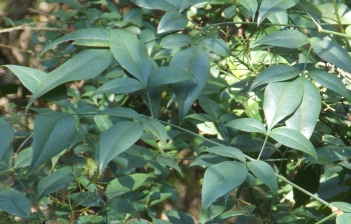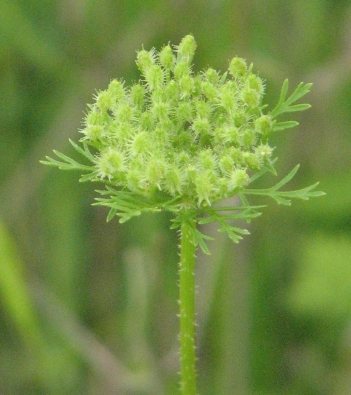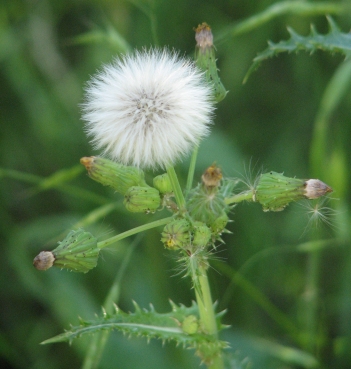Bamboo; Japanese Sacred Bamboo/Heavenly Bamboo (Nandina) Nandina domestica. This is not a bamboo at all, but the attractive, frond-like, compound pinnate leaves (up to 18” long), could remotely resemble bamboo. Like bamboo, Nandina stems do not branch, the leaf stems leaving sheath like debris behind, which eventually sloughs off, leaving a corrugated, but smooth stem. This invasive, shade loving, ornamental, Japanese evergreen shrub is now native to the DFW area as an understory plant in forests. New plants grow readily from soft, bright red berries, plants transplant readily, and new side stalks grow from a woody base. The flowers have no fragrance, and the leaves have a foul odor when cut or bruised, so the appeal is only visual. Dense terminal panicles bear showy, stiff, waxy, white flowers, each up to ¾” wide, with 6 white petals arranged around a white pistol ringed by 6 yellow-tan stamen. Closer examination reveals that the stamen look like a rosette of petals. Green berries turn bright red in the winter, lasting till spring. All parts of the plant are considered toxic. (not in book) 5/10/15; 4/26/16; 4/25/17; 5/14/18; 5/28/19; 5/10/20 – 5/30/20;

Japanese Sacred Bamboo habit; a woody undergrowth plant with cane like stems, and frond like compound pinnate leaves, growing in thick clumps, which bears panicles of white flowers converting to red berries

Note; the stiff, cane like stems retain sheaths of old leaves

Note; doubly compound pinnate leaves composed of sets of three smooth, lanceolate leaflets arranged in opposite pairs along stiff stems, which are also born in opposite pairs from a central leaf rib

Note; terminal panicles of waxy, white, stiff flowers with petal like yellow stamen; blooms in April-May

Note; pure white outer petals and a rosette of yellow-tan petal shaped stamen surrounding a central, fleshy white pistol

Note; panicles of green berries turn red in the Fall and Winter, lasting till Spring.
Note; all parts of the plant are considered toxic. Do not eat the berries



























